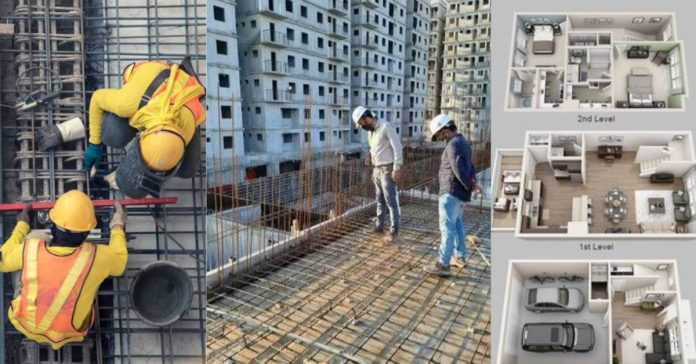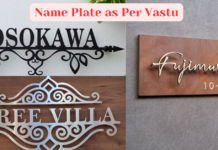Creating a Vastu-compliant home layout involves adhering to ancient principles designed to align with natural forces, promoting health, wealth, and happiness. Vastu Shastra, often referred to as the “science of architecture,” originates from ancient Indian texts and outlines guidelines for designing buildings that harmonize with nature. This guide will take you through the essential steps to create a Vastu-compliant home layout.
Understanding Vastu Shastra Principles
Five Elements
source : Pinterest
Vastu Shastra is based on the integration and balance of five elements:
- Earth (Prithvi): Represents stability and patience.
- Water (Jal): Symbolizes fluidity, emotion, and purity.
- Fire (Agni): Denotes energy, vigor, and transformation.
- Air (Vayu): Associated with movement, joy, and growth.
- Space (Akash): Encompasses infinity, enhancement, and cognition.
Directions
Each direction in Vastu Shastra is governed by a specific deity and element, influencing various aspects of life:
- North (Kubera): Wealth and prosperity.
- Northeast (Ishaan): Spiritual growth and well-being.
- East (Indra): Health and social connections.
- Southeast (Agni): Energy and strength.
- South (Yama): Fame and reputation.
- Southwest (Nirrti): Skills and family bonds.
- West (Varuna): Fulfillment and satisfaction.
- Northwest (Vayu): Change and growth.
Balance and Harmony
The core of Vastu Shastra is to achieve a balance between these natural forces, ensuring a harmonious living environment. The principles guide the placement and orientation of rooms, furniture, and elements within a home to harness positive energy and mitigate negative influences.
Plot Selection and Orientation
Shape
The shape of the plot is crucial in Vastu Shastra. A square or rectangular plot is considered ideal as it ensures a balanced distribution of energy. Irregularly shaped plots can cause imbalances and should be avoided or corrected with Vastu remedies.
Direction
The direction in which the plot faces is equally important. A plot facing north or east is preferred because these directions are associated with prosperity and positive energy flow. North-facing plots attract wealth, while east-facing plots are believed to bring good health and social success.
Slope
Ideally, the land’s slope should face either north or east. This orientation ensures that water flows in the right direction, promoting a positive energy flow within the home.
Designing the Entrance
source: Pinterest
North or East Entrance
An entrance in the north or east is considered highly auspicious in Vastu Shastra. The north direction is associated with wealth, and an entrance here invites financial prosperity. The east direction, governed by Indra, enhances health and social connections.
Avoid Southwest Entrances
Entrances in the southwest direction should be avoided as they are believed to bring negative energy and financial instability. If an entrance in this direction is unavoidable, Vastu remedies like placing Vastu pyramids or other corrective measures can be used.
Threshold
Installing a small threshold at the entrance helps prevent negative energy from entering the home. It acts as a barrier, ensuring that the energy inside the house remains positive and undisturbed.
Also Read: Transform Your Bedroom with Vastu Shastra Secrets for Better Sleep and Positive Energy
Room Placement
Living Room
- Location: The living room should ideally be located in the north or east. These directions allow for ample natural light and positive energy.
- Windows: Large windows in the living room ensure a good flow of natural light and ventilation, enhancing the overall ambiance and energy of the space.
Kitchen
- Location: The kitchen should be in the southeast corner of the house, known as the Agni corner, governed by the fire element. This placement ensures that the cooking energy is in harmony with the natural energy flow.
- Alternate Location: If the southeast is not feasible, the northwest is an acceptable alternative.
- Cooking Direction: The person cooking should face east. This orientation is believed to bring positive energy and good health to the family.
Bedroom
- Master Bedroom: The master bedroom should be located in the southwest, which brings stability and strength to the household leaders.
- Children’s Bedroom: The west or northwest is ideal for children’s bedrooms, promoting creativity and growth.
- Guest Room: The guest room can be in the north or northeast, ensuring a comfortable stay for visitors.
Bathrooms and Toilets
- Location: Bathrooms and toilets should be in the northwest or southeast. These locations help manage the waste and water flow effectively.
- Avoid: The northeast corner should be avoided for bathrooms and toilets as it can disturb the overall energy balance.
Pooja Room
- Location: The pooja room, or place of worship, should be in the northeast corner, known as the Ishaan corner. This placement aligns with spiritual growth and purity.
- Orientation: While praying, face east or north to maximize the spiritual benefits.
Interior Layout and Furniture Placement
Living Room Furniture
source : Pinterest
- Placement: Heavy furniture like sofas and cabinets should be placed in the south or west of the living room. This positioning provides stability and balance.
- Seating: Arrange seating so that people face north or east, promoting positive interactions and energy flow.
Also Read: Vastu Shastra for west facing home: Benefits, Guide and Tips
Bedroom Furniture
source : Pinterest
- Bed Placement: Place the bed with the headboard towards the south or east. This orientation is believed to improve sleep quality and health.Vastu-compliant home
- Avoid: Mirrors facing the bed can cause disturbed sleep and should be avoided.
Kitchen Appliances
source : Pinterest
- Placement: The cooking stove should be in the southeast corner, aligning with the fire element.
- Water Elements: Place sinks and water elements in the northeast, ensuring a harmonious balance between fire and water.
Also Read: Knowing Vastu Shastra: The Age-Old Indian Architectural Science
Colors and Decor
Colors
source : Pinterest
- Light, Neutral Colors: Use light, neutral colors for walls to create a calm and balanced environment.
- Avoid: Dark and bright colors in excess, as they can create imbalances and agitation.
Decor
- Symbols of Prosperity: Include symbols of prosperity and positivity, such as plants, crystals, and Vastu pyramids. These items enhance the flow of positive energy and mitigate any negative influences.
Lighting and Ventilation
Natural Light
Maximize natural light, especially from the north and east. Natural light is a powerful source of positive energy, and its abundance can significantly improve the home’s ambiance and energy.
Artificial Lighting
Use soft, warm lighting to create a soothing environment. Harsh or excessively bright lighting can disrupt the balance and harmony within the home.
Ventilation
Ensure proper cross-ventilation to allow a continuous flow of fresh air, maintaining a healthy and vibrant living space.
Final Vastu Enhancements
Vastu Remedies
Use Vastu pyramids, crystals, and mirrors to correct any Vastu doshas (defects). Vastu-compliant home These remedies help balance the energy and mitigate any negative influences.
Regular Cleansing
Keep the home clean and clutter-free to allow positive energy to flow uninterrupted. Regular cleansing, both physically and energetically, helps maintain a harmonious living environment.
Conclusion
Creating a Vastu-compliant home layout involves careful planning and consideration of various elements and directions. By adhering to these guidelines, you can design a home that promotes harmony, health, and prosperity. Whether building a new home or renovating an existing one, integrating Vastu Shastra principles can significantly enhance the quality of life and overall well-being of the inhabitants.
By following this comprehensive guide, you can create a balanced, harmonious living space that aligns with natural forces, fostering an environment of positivity and growth.
Frequently asked questions :
The five elements in Vastu Shastra are Earth (Prithvi), Water (Jal), Fire (Agni), Air (Vayu), and Space (Akash). These elements must be balanced to create a harmonious living environment.
Square or rectangular plots are considered ideal in Vastu Shastra as they ensure a balanced distribution of energy.
Entrances in the north or east are considered auspicious because they attract positive energy, prosperity, and good health.
The kitchen should ideally be located in the southeast corner of the house, which is governed by the fire element, ensuring harmony in cooking energy.
Vastu doshas can be corrected using remedies such as Vastu pyramids, crystals, mirrors, and regular cleaning to maintain a positive energy flow in the home.


































